I am perpetually curious about everything, so it really isn’t surprising that I love teaching with informational texts. My own personal interests are fairly varied, although if you looked at my bookshelf, it’s full of innumerable books about teaching: books about reading comprehension, books about phonics instruction, books about concrete models, books about how the brain learns, books about gifted education, books about guided reading, books about assessment, and the list goes on and on. Despite my almost all-consuming interest in teaching, and literacy in particular, I love reading about varied topics. (Bare with me here. There’s a point I’m trying to make!) History was my minor, and I am fascinated by ancient civilizations, colonial America, the black plague, Egypt, Middle Ages, and the Puritans (to name a few random topics). I enjoy reading the newspaper, reading reviews, reading opinion-editorials, and a plethora of other informational texts on seemingly endless topics. Nonfiction makes up the bulk of the reading I do as an adult. This is undoubtedly true for every person reading this blog right now. Informational texts reign supreme, and our students need more of it. They also need CHOICE in the topics they read about. As varied as my interests are, there are certain topics that make me want to gouge my eyes out with a dull spork: the short list includes pretty much anything having to do with finances and technical texts on how-to-build-this-or-that. Now, that doesn’t mean I shouldn’t read those texts ever-in-a-million-years. They are practical and important, and I need access to that information, I just loathe it. So, I need choice to read about other topics that interest me to fuel my love of nonfiction and my own individual passions too. Kids are the same.
While teaching with informational texts, I like to designate certain texts as read alouds and mentor texts. These books are selected because they usually address multiple standards across multiple content areas, and they are well written, contain rich examples of text structure/text features, and are genuinely interesting to kids. That said, I like to utilize several different books when I teach nonfiction to provide a wider perspective, to make connections, to differentiate up or down, and to tap into student interests. So, when I created my Informational Text Centers, I really wanted centers that could be used with various different texts to meet the needs of various different students. Some are stand-alone centers that don’t require a book, while books are necessitated by others. Ultimately, I let my students self-select texts. I have found that they are far more successful when they have a choice and are invested in learning about a particular topic, however you could certainly place a few carefully chosen texts in the centers, and that would suffice as well.
When my students are interacting in centers, I really want them to be mostly self-sufficient and self-directed. I want my students to build on what we are doing in our mini-lessons and whole group activities. For example, this center requires students to go through a text like a scavenger hunt and identify text features using sticky notes. I created faux sticky notes with terms to help facilitate the process, but this is pretty straightforward and engaging.
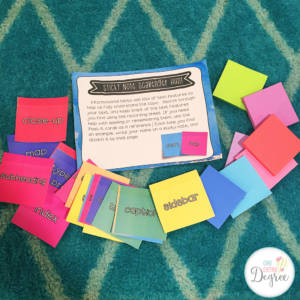
To “zoom in” on close-ups, I curated a collection of close-ups for my students to describe in detail. They also have the opportunity to reflect on how this text feature aids in their comprehension.
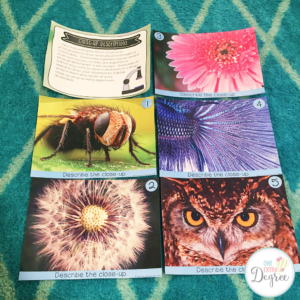
I also created a center that allows students to create their own close-ups using a magnifying glass. So fun!
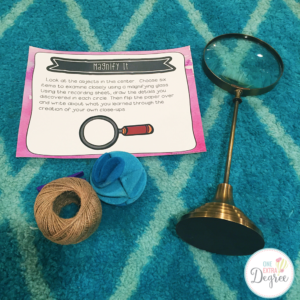
I took photographs of familiar objects and animals and placed them in my Label It center. It requires students to create labels for multiple photos and reflect on how labels help readers. I actually created two versions of this. One option would be to use Post-It flags, and the other would be to place the Label It pages into sleeves to use with dry-erase markers.
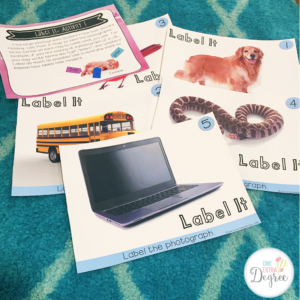
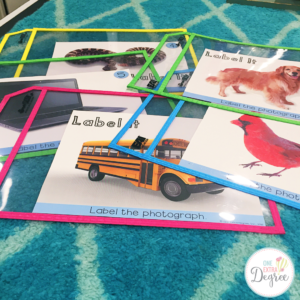
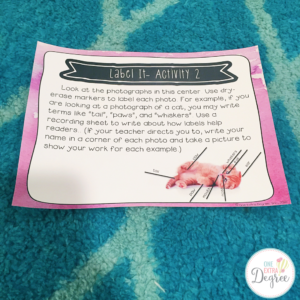
This center asks students to create a diagram showing the life cycle of a frog. There’s something about CREATING a text feature that really cements it for many students, and this is very tactile and engaging!
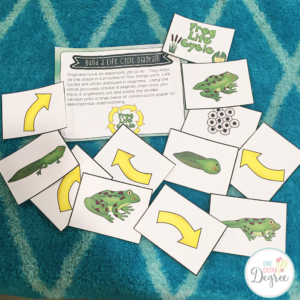
Over the years, I have found that my students struggle to grasp the concept that a cutaway is literally like cutting something in half and peeking inside of it. This center uses two oranges to illuminate how cut-aways work in a simple way.
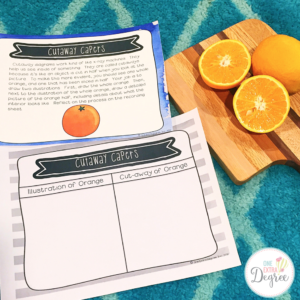
As more of a comprehensive center approach, I created “Name That Text Feature” to review the various text features students encounter in texts. They can work in groups of 2-4 to take turns identifying text features and recording each one and each function in a recording booklet. If they correctly identify a feature, their frog hops onto a lily pad. The first to fill the container or hop across to the other side (depending on how you want to play it) wins.
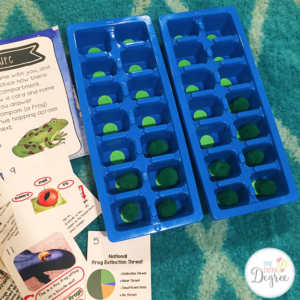

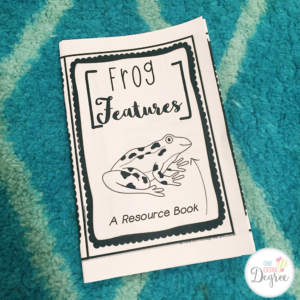
Aside from informational text features, our students need to know how to identify different text structures and how to extract information proficiently. So, I created one center per text structure with a direction page, a poster, and a graphic organizer. They could even be utilized outside of the centers to take your whole group instruction a little deeper!
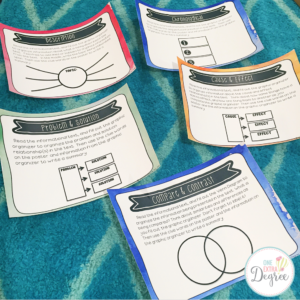

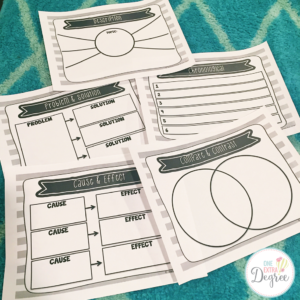
I created a similar activity to help students practice finding the main idea and key details in informational text. I created a second center that focuses entirely on key details as well.
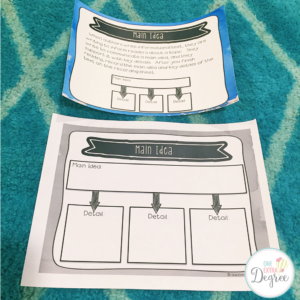

Schema is so important when reading informational texts, so I created two centers to address this strategy. One sets kids up to create a schema folder listing facts they already know, new learning, and misconceptions. The second activity has students consider their own schema (in a more general sense) using a lint roller. Their schema sticks with them, just like lint sticks to a lint roller. I love the idea of using items as concrete models. It is such a powerful way to teach!

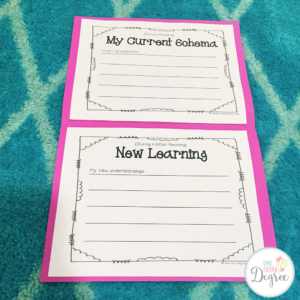
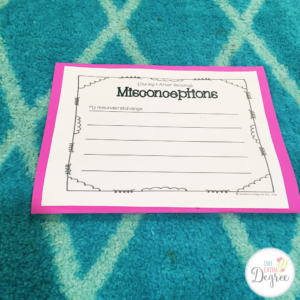
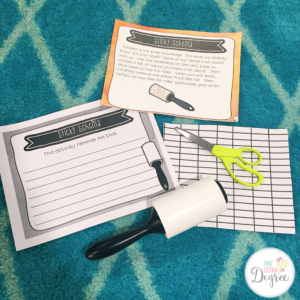
To help students practice making connections, they can make a paper chain of connections. This is so tactile and provides yet another concrete model to aid in comprehension.
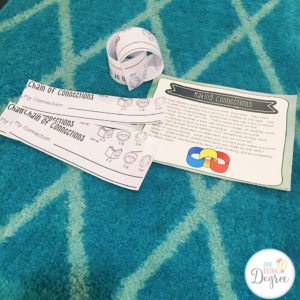
This next center is a freebie file in my store, and it allows students to create a “metacognition salad” as they read an informational text independently. This fabulous idea was from Tanny McGregor originally, and it has been adapted to be used by students for individual practice.
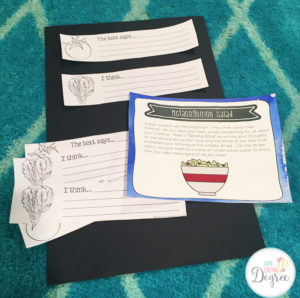
The “Treasured Words” center is a great way to have students pay attention to interesting or poetic word choice as they read their informational text. They record the words and create bookmarks to display powerful language.
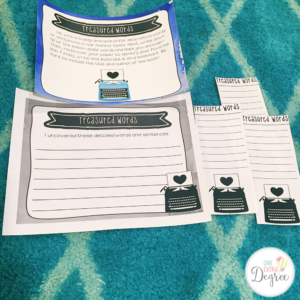
In addition, there’s a smattering of other skills addressed in centers: fluency, speaking and listening, tables of contents, point of view, visualizing, and more!

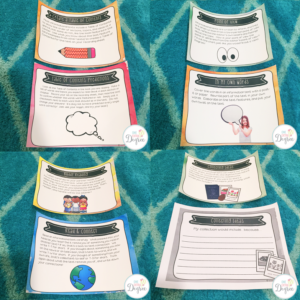
Are you ready to take your informational text instruction up another notch…that one extra degree?! Check out my Informational Text Centers!

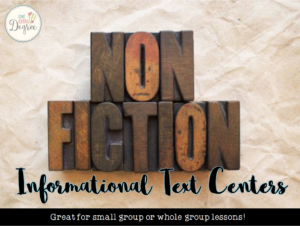

Do you have these activities for 2nd grade as well?
Hi, Glenda! I am sorry for the really slow response. I have had a series of personal tragedies this year, and I am just now resuming blogging and my other online endeavors. I only made one set of these activities, but they would be appropriate for second graders as well. 🙂 Blessings to you!